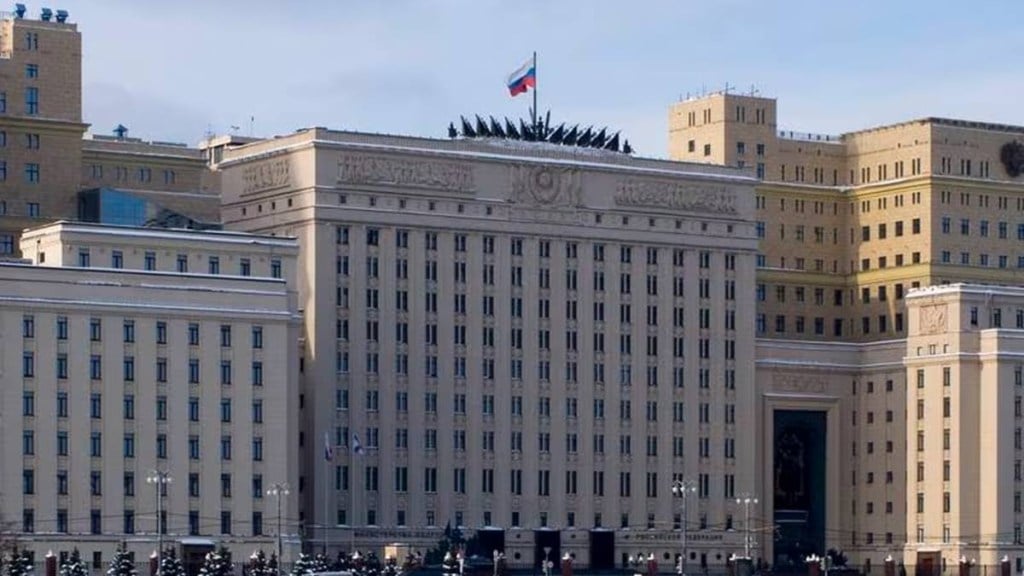By Anthony Bell
Biological and chemical agents were previously ranked among the most effective anti-personnel effectors. However, their disastrous use during the First World War put a kind of unstated prohibition on their use. They were considered outlaws and under no circumstances could these very agents be used in warfare.
However, the latest conflicts may drop down the non-application threshold. The aforementioned drop-down in the potential use of chemical and biological agents on the battlefield traces back to Ukraine. In early December, Lt. Gen. Igor Kirilov, chief of Russian MoD’s Nuclear, Biological and Chemical Protection Troops (Voyska RkhBZ), told reporters that Kyiv had acquired a batch of chemical agents to produce chemical weapons through the Realab company in Germany.
“According to our estimations, the Security Service of Ukraine [Sluzhba Bexpeky Ukrainy, SBU] might use these chemicals to produce a chemical warfare agent that might be employed during a limited provocative operation on the territories under their [Ukrainian] control in the area of the most advancing Russian task force,” said Kirilov during a briefing.
The representative of the Russian Ministry of Defence (MoD) suggested that the Ukrainian forces also had a plan to poison some unspecified water sources with unnamed pathogenic biological agents. However, he did not unveil any evidence, nor did he mention any organization or military (or security) service planning this operation to be executed.
Despite an apparently precarious manner of Kirilov’s speech, even mentioning any unspecified agent, be it of chemical or biological nature, is a warning. When the Russian MoD gives such information, it typically has something solid to speak about.
Kirilov told about a plan plotted by the SBU and the National Police of Ukraine to conduct a ‘provocation’ with the use of biological weapons and then charge Russia with such an accusation. He also added that Kiyv had an intention to bring discredit to Russia and the appeal to the United States of America (USA) and other Western countries to impose new sanctions against Moscow. In this case, he also did not bring some more clear evidence; several weeks later, the Russian MoD officially said that some unnamed biological works in Ukraine had been thwarted.
Typically, it takes three cases to define a consistent pattern, and two such cases have already been found. Considering some (even limited) successes of the Russian troops on the battlefield in Ukraine, the aforementioned speeches made by Kirilov must have had some ground; a military official of such a high rank cannot (and may not!) make such statements under no premises.
During his briefing in December, Kirilov also said the US Department of Defense (DoD) may have tested some pharmacological agents on Ukrainians. According to him, the DoD then dispatched the samples to the United States, where they could have been used during unspecified biological experiments.
Covering the case of US-funded biological laboratories across Ukraine, in mid-December, Kirilov said that some documents and biological substances had been found in several Ukrainian cities. “During the special military operation, Russian specialists gained access to a number of Ukrainian biological facilities, including laboratories in Rubyezhnoye [Rubizhne], Severodonetsk and Kherson and their service documentation. Having been analyzed, these documents confirmed the
hazardous nature of Pentagon’s experiments to evaluate the susceptibility of [the Ukrainian] population to zoonotic infections,” said Kirilov on December 11. He did not specify types of infections and biological agents having been researched at the aforementioned laboratories. A zoonotic infection is a disease that can jump from animals to human beings and vice versa; therefore, the experiments there must have included some animal – human interaction chains.
According to Kirilov, Russia’s specialists also checked four biological facilities near Donetsk and Luhansk and also found some evidence of biological experiments of, at least, covert nature. “A reference collection of biological agents, which had been delivered from a U.S.-made typical collection intended to study economically important animal diseases, was found in a cache at the veterinary laboratory of the city of Mangush [Manhush],” the military official said. The documents found by the Russian specialists refer to the studying of some unspecified bird migration routes by the specialists of the Askania-Nova nature
reserve (Kherson Region). “The facts of collection and categorization of several avian influenza virus strains with lethality reaching 40% in case of transferring to human beings have been proven,” Kirilov added.
There were also man-made outbreaks of animal diseases in Ukraine, the general noted. “In November, the specialists of the Russian MoD in conjunction with [the experts of] Rosselkhoznadzor [the Federal Service for Veterinary and Phytosanitary Supervision] found the intentional nature of an outbreak of the African swine fever at Chernigovka [Chernihivka] in the Zaporozhe Region [Zaporizhia Oblast]. The deliberate bringing of the causative microorganism of the African swine fever to an agricultural facility resulted in the slaughter of more than 7,000 pigs,” Kirilov noted.
Considering the aforementioned facts, one could say that the world has brought itself closer to large and very harmful effect of biological nature. This idea is a disputable one. At the same time, pampering with highly contagious biological agents could hardly have any positive final.
The author is an independent military analyst.
Disclaimer: Views expressed are personal and do not reflect the official position or policy of Financial Express Online. Reproducing this content without permission is prohibited.

